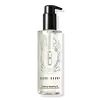What's inside
What's inside
 Key Ingredients
Key Ingredients

 Benefits
Benefits

 Concerns
Concerns

 Ingredients Side-by-side
Ingredients Side-by-side

Water
Skin ConditioningDimethicone
EmollientBis-Diglyceryl Polyacyladipate-2
EmollientButylene Glycol
HumectantPPG-2 Myristyl Ether Propionate
EmollientCetyl Alcohol
EmollientPEG-40 Stearate
EmulsifyingButyrospermum Parkii Butter
Skin ConditioningRhodochrosite Extract
AntioxidantAscorbyl Glucoside
AntioxidantSqualane
EmollientTrisiloxane
Skin ConditioningGlyceryl Stearate
EmollientSorbitan Stearate
EmulsifyingEpilobium Angustifolium Flower/Leaf/Stem Extract
Skin ConditioningYeast Extract
Skin ConditioningDaucus Carota Sativa Root Extract
Skin ConditioningSpinacia Oleracea Leaf Extract
Skin ConditioningVaccinium Angustifolium Fruit Extract
Skin ProtectingBrassica Oleracea Italica Extract
AstringentAlgae Extract
EmollientBeta-Carotene
Skin ConditioningSodium Hyaluronate
HumectantTocopheryl Acetate
AntioxidantPanthenol
Skin ConditioningMagnesium Ascorbyl Phosphate
AntioxidantCaffeine
Skin ConditioningFolic Acid
Skin ConditioningPyridoxine Dipalmitate
Skin ConditioningCyanocobalamin
Skin ConditioningNiacinamide
SmoothingRetinyl Palmitate
Skin ConditioningPhytosphingosine
Skin ConditioningParfum
MaskingGlycerin
HumectantCaprylyl Glycol
EmollientMethyl Glucose Sesquistearate
EmollientDimethicone Crosspolymer
Emulsion StabilisingAcrylates/C10-30 Alkyl Acrylate Crosspolymer
Emulsion StabilisingCarbomer
Emulsion StabilisingPEG-20 Methyl Glucose Sesquistearate
EmulsifyingC12-15 Alkyl Ethylhexanoate
EmollientTetrasodium EDTA
Sodium Hydroxide
BufferingLimonene
PerfumingCitronellol
PerfumingGeraniol
PerfumingLinalool
PerfumingBHT
AntioxidantSorbic Acid
PreservativeChlorphenesin
AntimicrobialPhenoxyethanol
PreservativeWater, Dimethicone, Bis-Diglyceryl Polyacyladipate-2, Butylene Glycol, PPG-2 Myristyl Ether Propionate, Cetyl Alcohol, PEG-40 Stearate, Butyrospermum Parkii Butter, Rhodochrosite Extract, Ascorbyl Glucoside, Squalane, Trisiloxane, Glyceryl Stearate, Sorbitan Stearate, Epilobium Angustifolium Flower/Leaf/Stem Extract, Yeast Extract, Daucus Carota Sativa Root Extract, Spinacia Oleracea Leaf Extract, Vaccinium Angustifolium Fruit Extract, Brassica Oleracea Italica Extract, Algae Extract, Beta-Carotene, Sodium Hyaluronate, Tocopheryl Acetate, Panthenol, Magnesium Ascorbyl Phosphate, Caffeine, Folic Acid, Pyridoxine Dipalmitate, Cyanocobalamin, Niacinamide, Retinyl Palmitate, Phytosphingosine, Parfum, Glycerin, Caprylyl Glycol, Methyl Glucose Sesquistearate, Dimethicone Crosspolymer, Acrylates/C10-30 Alkyl Acrylate Crosspolymer, Carbomer, PEG-20 Methyl Glucose Sesquistearate, C12-15 Alkyl Ethylhexanoate, Tetrasodium EDTA, Sodium Hydroxide, Limonene, Citronellol, Geraniol, Linalool, BHT, Sorbic Acid, Chlorphenesin, Phenoxyethanol
Isopropyl Palmitate
EmollientPentaerythrityl Tetraethylhexanoate
EmollientPolybutene
PEG-20 Glyceryl Triisostearate
EmollientIsohexadecane
EmollientPEG-8 Diisostearate
EmulsifyingAleurites Moluccanus Seed Oil
Skin ConditioningPEG-12 Diisostearate
EmulsifyingTocopherol
AntioxidantLimnanthes Alba Seed Oil
Skin ConditioningOlea Europaea Fruit Oil
MaskingHelianthus Annuus Seed Oil
EmollientMethyldihydrojasmonate
MaskingSimmondsia Chinensis Seed Oil
EmollientJasminum Officinale Flower Wax
EmollientCalophyllum Inophyllum Seed Oil
AntimicrobialCamellia Japonica Seed Oil
EmollientLavandula Hybrida Oil
EmollientLavandula Angustifolia Oil
MaskingBisabolol
MaskingGlycerin
HumectantGlyceryl Laurate
EmollientWater
Skin ConditioningPentylene Glycol
Skin ConditioningDipentaerythrityl Tri-Polyhydroxystearate
EmollientLinalyl Acetate
MaskingTocopheryl Acetate
AntioxidantIsopropyl Palmitate, Pentaerythrityl Tetraethylhexanoate, Polybutene, PEG-20 Glyceryl Triisostearate, Isohexadecane, PEG-8 Diisostearate, Aleurites Moluccanus Seed Oil, PEG-12 Diisostearate, Tocopherol, Limnanthes Alba Seed Oil, Olea Europaea Fruit Oil, Helianthus Annuus Seed Oil, Methyldihydrojasmonate, Simmondsia Chinensis Seed Oil, Jasminum Officinale Flower Wax, Calophyllum Inophyllum Seed Oil, Camellia Japonica Seed Oil, Lavandula Hybrida Oil, Lavandula Angustifolia Oil, Bisabolol, Glycerin, Glyceryl Laurate, Water, Pentylene Glycol, Dipentaerythrityl Tri-Polyhydroxystearate, Linalyl Acetate, Tocopheryl Acetate
Ingredients Explained
These ingredients are found in both products.
Ingredients higher up in an ingredient list are typically present in a larger amount.
Glycerin is already naturally found in your skin. It helps moisturize and protect your skin.
A study from 2016 found glycerin to be more effective as a humectant than AHAs and hyaluronic acid.
As a humectant, it helps the skin stay hydrated by pulling moisture to your skin. The low molecular weight of glycerin allows it to pull moisture into the deeper layers of your skin.
Hydrated skin improves your skin barrier; Your skin barrier helps protect against irritants and bacteria.
Glycerin has also been found to have antimicrobial and antiviral properties. Due to these properties, glycerin is often used in wound and burn treatments.
In cosmetics, glycerin is usually derived from plants such as soybean or palm. However, it can also be sourced from animals, such as tallow or animal fat.
This ingredient is organic, colorless, odorless, and non-toxic.
Glycerin is the name for this ingredient in American English. British English uses Glycerol/Glycerine.
Learn more about GlycerinTocopheryl Acetate is AKA Vitamin E. It is an antioxidant and protects your skin from free radicals. Free radicals damage the skin by breaking down collagen.
One study found using Tocopheryl Acetate with Vitamin C decreased the number of sunburned cells.
Tocopheryl Acetate is commonly found in both skincare and dietary supplements.
Learn more about Tocopheryl AcetateWater. It's the most common cosmetic ingredient of all. You'll usually see it at the top of ingredient lists, meaning that it makes up the largest part of the product.
So why is it so popular? Water most often acts as a solvent - this means that it helps dissolve other ingredients into the formulation.
You'll also recognize water as that liquid we all need to stay alive. If you see this, drink a glass of water. Stay hydrated!
Learn more about Water